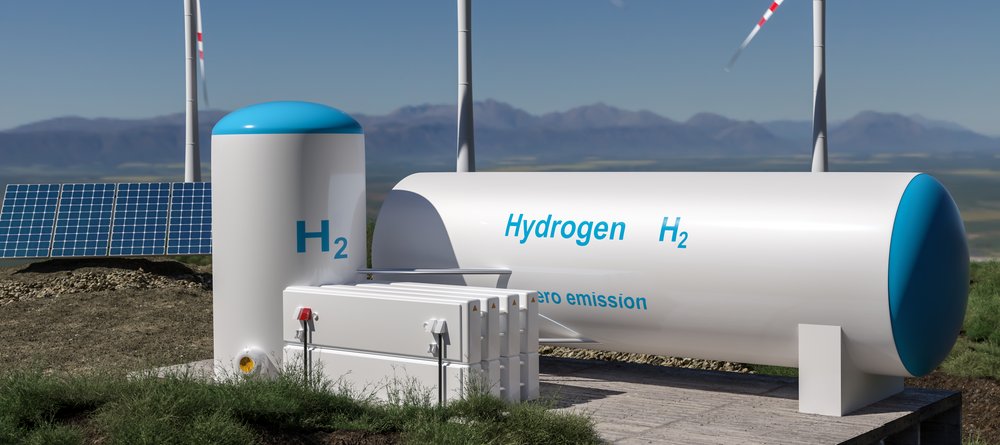The vision of a world moving on hydrogen was born in 1874 with Jules Verne’s novel The Mysterious Island. Hydrogen is the first abundant element in the universe; it is a source of energy in gaseous form, which can be produced using renewable energy sources such as the sun and wind; when used as fuel, it emits only water. It can also be transported over long distances and stored for long periods, utilizing existing energy infrastructure.
Since now, renewable hydrogen has been accompanied by prohibitive costs, yet with the advancement of green technology in recent years, scientists are convinced that it will play a vital role in the planet’s energy future.
Italy can play a leading role in this process due to its geographical location, business and research capabilities, and institutional sensitivity. Southern Italy and the Mediterranean countries, in general, rich in renewable energy sources, are the ones that could make the use of hydrogen as the new source of clean energy and, at the same time, create new opportunities for growth and employment.
“Our generation is, perhaps, the last to have the opportunity to combat the threatening global climate crisis effectively,” a crisis that is sadly presumed in numbers, said the joint statement of the Heads of State at the Climate Change Summit a year ago. In 2018, the CO2 emissions produced by the energy sector increased even more than in previous years, reaching 33 billion tons, the highest point of all time. The United Nations Environment Program (UNEP) estimates that at this rate, global temperatures in the year 2100 will rise by more than 3 degrees Celsius, compared to the pre-industrial era, far exceeding the limits set at the Paris Conference in 2015. According to the results, the efforts made so far are significant, but unfortunately isolated and leave no considerable room for optimism.
Therefore, it is necessary to increase the percentage of electricity produced in the energy mix from renewable energy sources, which, although characterized by an increasing trend, currently represents only 20% of energy demand. As a plan is needed for the rest of the system, Europe must take a global lead on climate change. However, it currently accounts for only 10% of greenhouse gas emissions and cannot win the bet independently. That is why a global commitment is needed to create financial opportunities for all citizens, distributing costs fairly, and minimizing them to the maximum. In other words, a coordinated effort is required between the different energy production sectors.
Nevertheless, it is difficult to find standard solutions between the “world of electrons” (electricity) and molecules (oil, gas, and their derivatives). Almost everywhere, these two macroeconomic sectors are organized in separate structures, which in addition to the use of different languages, they have entirely different goals.
But today, citizens have begun to take action and change their way of life, with young people leading the way in shaking up public opinion, urging adults, institutions, companies, decision-makers to take decisive action.
At the same time, new green technologies reduce the cost of renewable energy sources and expand the scope of their potential uses. We are talking about making greener electricity production and increasing its use, and eliminating CO2 emissions from industry, transport, and heating through biomethane, carbon sequestration, and use of hydrogen produced from renewable sources.
Hydrogen, as highlighted in the study presented at the G20 Summit in Osaka by the International Energy Agency (IEA), has all the specifications to become an efficient, global and economical solution and to assist all renewable energy sources in carbonizing energy systems. Hydrogen can be a critical factor in combating climate change and air pollution. In particular, it acts as a bridge between the different energy sectors, as it can be produced with electricity and used both as fuel and for electricity generation.
The use of hydrogen has encountered many obstacles in its establishment in recent years. One such block is cost, but the necessary steps are being taken. More specifically, it is reported that with appropriate economies of scale, the cost of hydrogen from renewable sources can be reduced to around $ 2 per kilo, as early as 2030, and further reduced in the coming years to $ 1 / kg, with a current starting price around $ 5 / kg. In this way, the use of hydrogen would become competitive even without subsidies in many energy sectors.











[…] of widely used low-cost materials such as silicone, and can break down water into two components, hydrogen and […]
[…] a hydrogen fuel cell is combined with oxygen and hydrogen, its chemical reaction produces electricity. Fuel […]
[…] is the conversion of biomass into stable liquid hydrocarbons using low temperature and high hydrogen pressure. Consequently, interest in liquefaction is low because reactors and fuel supply systems […]
Comments are closed.